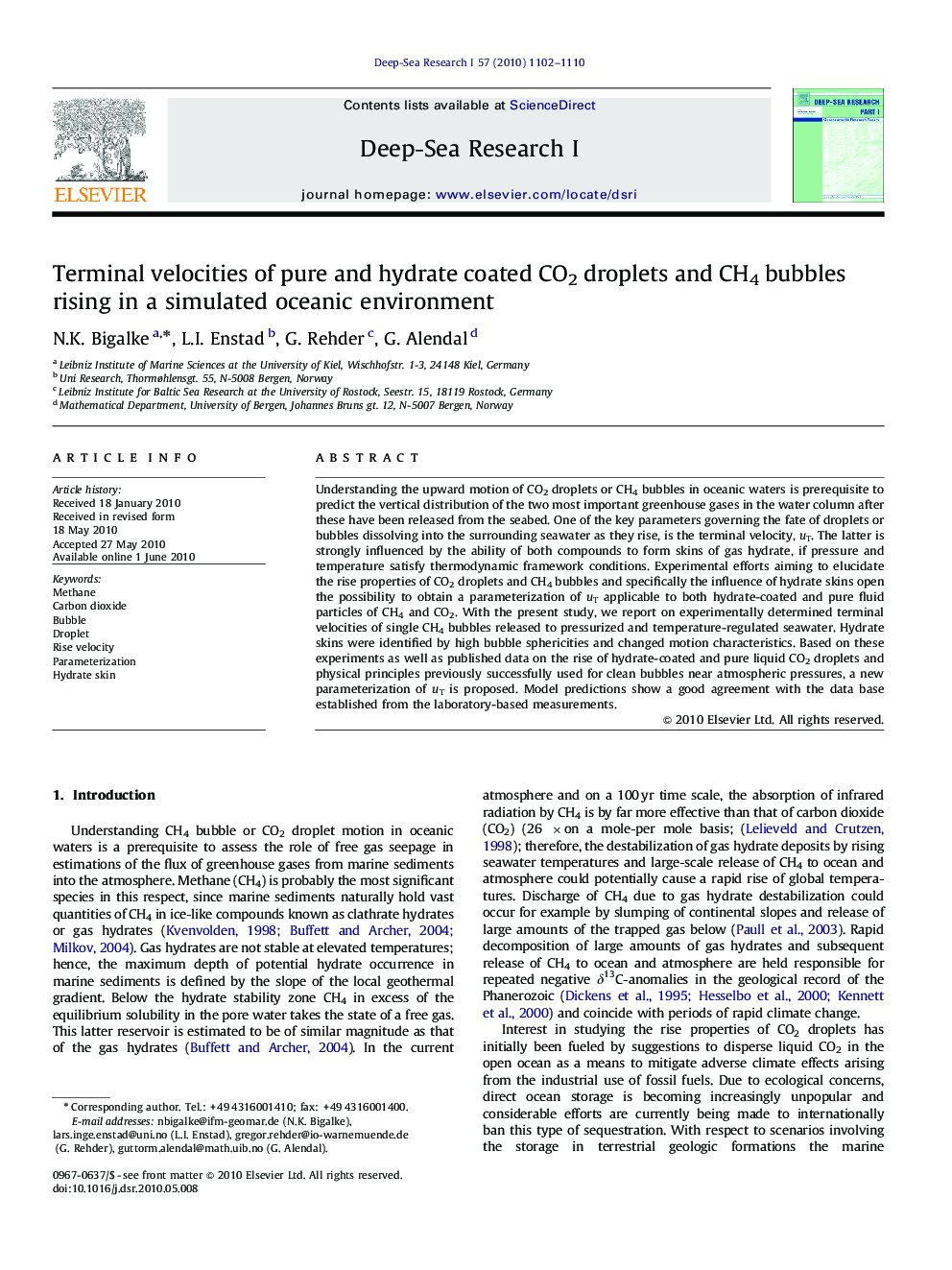| Article ID | Journal | Published Year | Pages | File Type |
|---|---|---|---|---|
| 4535009 | Deep Sea Research Part I: Oceanographic Research Papers | 2010 | 9 Pages |
Understanding the upward motion of CO2 droplets or CH4 bubbles in oceanic waters is prerequisite to predict the vertical distribution of the two most important greenhouse gases in the water column after these have been released from the seabed. One of the key parameters governing the fate of droplets or bubbles dissolving into the surrounding seawater as they rise, is the terminal velocity, uT. The latter is strongly influenced by the ability of both compounds to form skins of gas hydrate, if pressure and temperature satisfy thermodynamic framework conditions. Experimental efforts aiming to elucidate the rise properties of CO2 droplets and CH4 bubbles and specifically the influence of hydrate skins open the possibility to obtain a parameterization of uT applicable to both hydrate-coated and pure fluid particles of CH4 and CO2. With the present study, we report on experimentally determined terminal velocities of single CH4 bubbles released to pressurized and temperature-regulated seawater. Hydrate skins were identified by high bubble sphericities and changed motion characteristics. Based on these experiments as well as published data on the rise of hydrate-coated and pure liquid CO2 droplets and physical principles previously successfully used for clean bubbles near atmospheric pressures, a new parameterization of uT is proposed. Model predictions show a good agreement with the data base established from the laboratory-based measurements.
